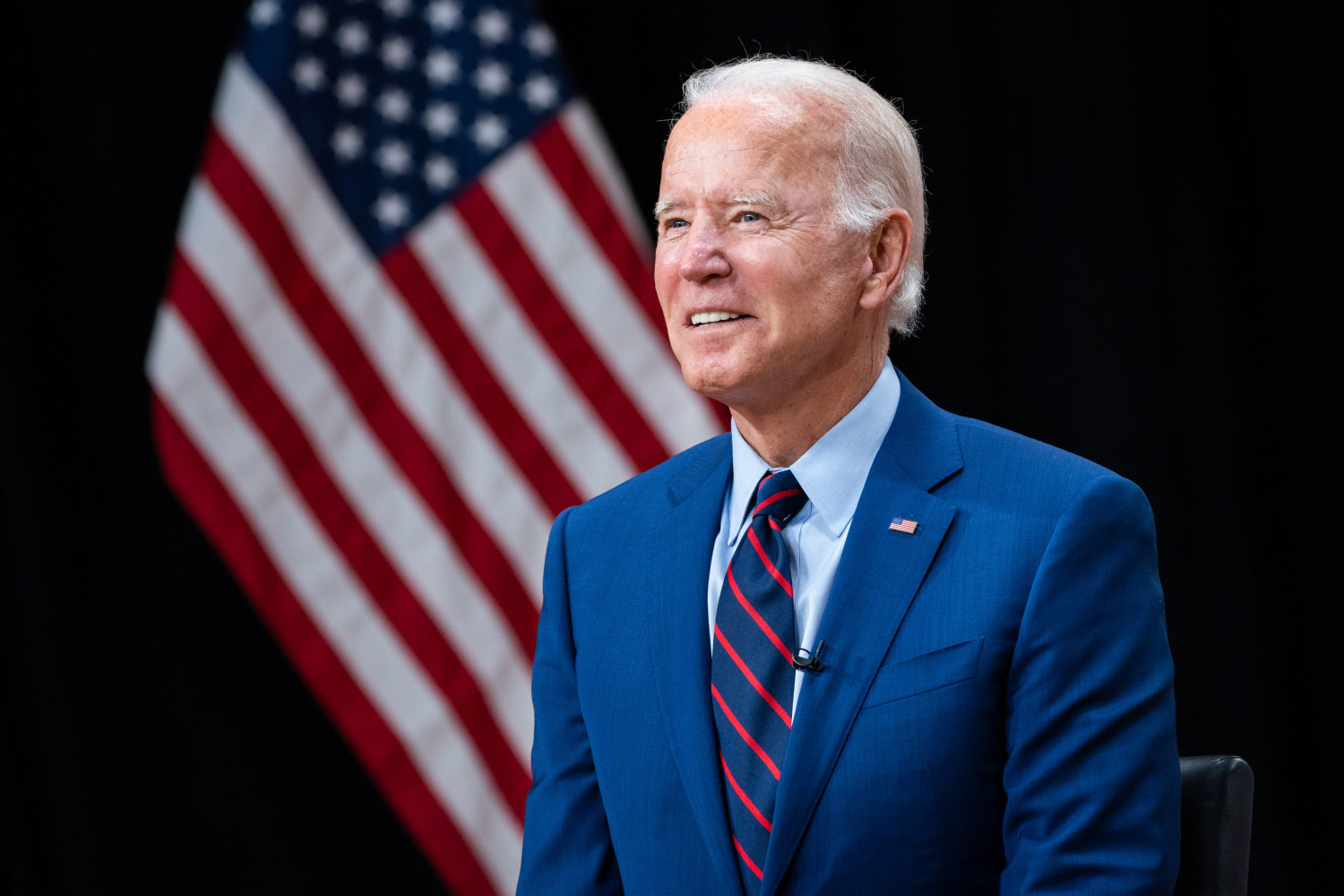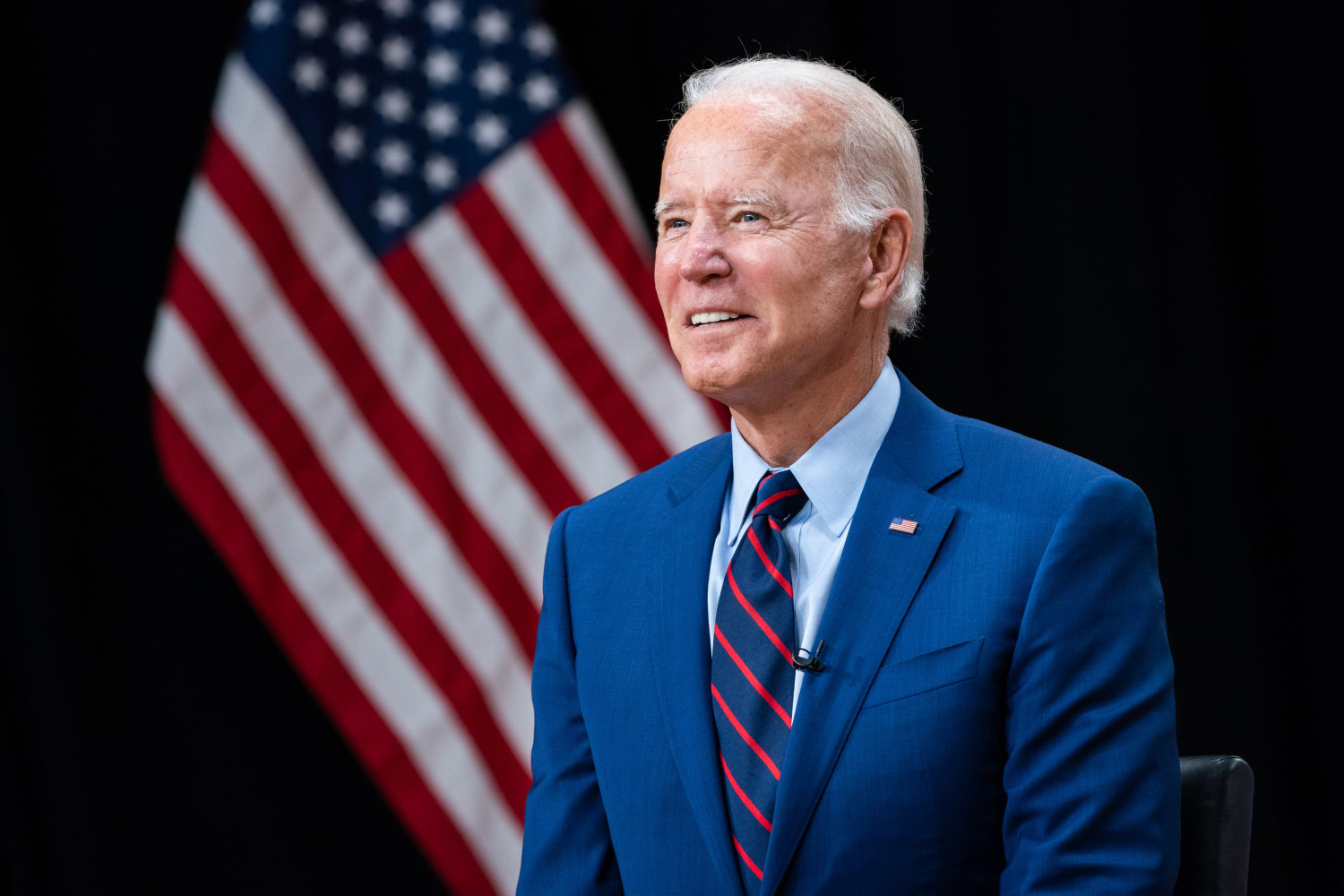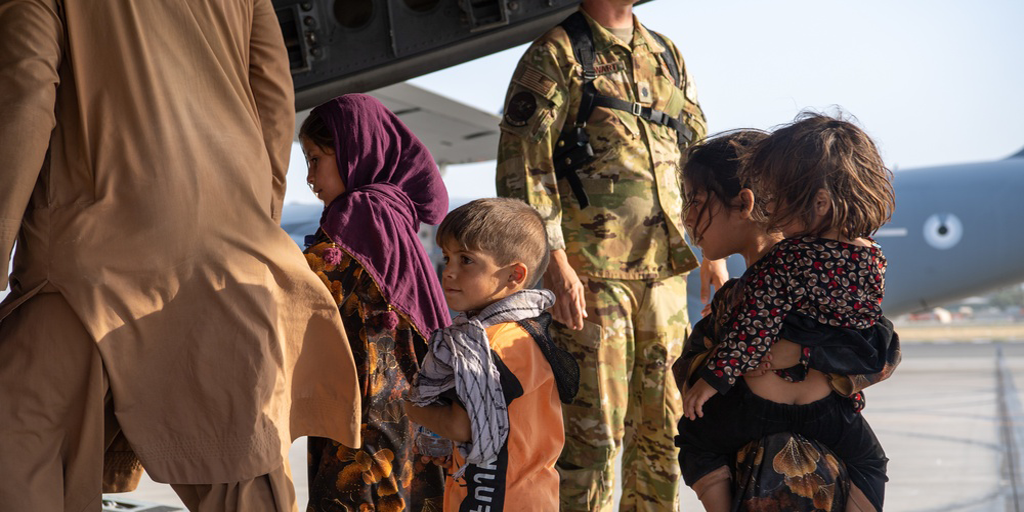
On August 29, 2021, President Biden directed the Department of Homeland Security (DHS) to lead and coordinate ongoing efforts across the federal government to support vulnerable Afghans, including those who worked alongside us in Afghanistan for the past two decades, as they safely resettle in the United States. At the President’s direction, the Secretary of Homeland Security is working with representatives from across the government to coordinate our response and ensure unity of effort.
To lead the effort in support of Operation Allies Welcome, DHS established a Unified Coordination Group (UCG). The UCG reports directly to the Secretary of Homeland Security and coordinates the implementation of a broad range of services, including initial processing, COVID-19 testing, isolation of COVID-positive individuals, vaccinations, additional medical services, and screening and support for individuals who are neither U.S. citizens nor lawful permanent residents. This support includes initial processing at pre-designated U.S. military bases prior to being connected with non-governmental organizations for resettlement into communities. The work of the UCG is undertaken in close collaboration with partners in state and local government, non-governmental organizations, and the private sector.

USCIS Provides - Frequently Asked Questions Related to Afghan Operation Allies Welcome Parolee Asylum
Q1- How are Operation Allies Welcome, vetting Afghan nationals who are arriving in the U.S.? How do they know that the Afghans don’t pose security risks?
The screening and vetting process involves biometric and biographic screenings conducted by intelligence, law enforcement, and counterterrorism professionals from the Departments of Homeland Security and Defense, as well as the Federal Bureau of Investigation (FBI), National Counterterrorism Center (NCTC), and additional intelligence community partners prior to their arrival in the United States.
If someone fails these checks while they are still overseas, they will not be permitted to board a flight to the United States. Additionally, all Afghans are required to undergo the same process as other persons arriving from outside the US: namely, additional inspection upon arrival and a secondary inspection as the circumstances require. If upon landing in the United States, further security vetting at the port of entry raises a concern about a person, CBP has the authority to not grant them entry into the United States.
Q2- If a person wants to apply for Asylum, how do they do that?
To apply for asylum, follow the directions and submit Form I-589, Application for Asylum and for Withholding of Removal. Form I-589 is available online at this location. An “alert” on this page with the title “Quick Asylum Adjudication for Certain Afghans” contains further specific instructions.
If an applicant fits into one of the following two categories, USCIS will process their Form I-589 as quickly as possible in accordance with Section 2502(c) of the Extending Government Funding and Delivering Emergency Assistance Act (PDF):
Category 1
If an applicant is a citizen or Afghan national, or if they have no nationality and have habitually resided in Afghanistan, they will be paroled into the United States between July 30, 2021, and Sept. 30, 2022; and their parole will not be terminated.
Category 2
If they are paroled into the United States after September 30, 2022, and are the spouse, child, or legal guardian of a person who meets Category 1 above and who is determined to be an unaccompanied child as defined by 6 U.S.C. 279(g)(2). They are citizens of Afghanistan or have no nationality. Their parole hasn’t been terminated.
Take the extra procedures listed below while completing your Form I-589 to ensure USCIS is aware that the asylum application has to be expedited:
- If applicants are submitting a Form I-589, which is the application for Asylum and for Withholding of Removal, they need to address the envelope in accordance with the directions in the “Where to File” or “Special Instructions” section (whichever is applicable) on the Form I-589 homepage;
- Anywhere on the front of the envelope, write “Attn: OAW”;
- In the Status field of Question 19c on page 1 of Form I-589, Part A.I., enter “(Parole)” after filling in the current status. For instance, if they have an “OAR” status when they entered the country, they would type “OAR (Parole)” in the Status field; and fill out the Date field on page 1 of Form I-589, Part A.I, Question 19c, with their most recent date of entry.
If the Form I-589 is completed correctly and USCIS finds that the applicant fits the requirements for Category 1 or 2 above, USCIS shall submit Form I-589 for quick processing in accordance with Section 2502(c) of the Act.
Q3- What will happen if we apply for asylum after the parole expires?
If you apply for asylum after your parole expires, we will accept your application and schedule you for an interview. At the interview, in addition to discussing the reason why you are applying for asylum, the asylum officer will ask you questions about why you did not file the application earlier. Based on your answers, the asylum officer will determine whether you have established a changed or extraordinary circumstance and whether your delay in filing an application for asylum is reasonable given the circumstance.
If the asylum officer determines that you have established a changed or extraordinary circumstance and that your delay in filing was reasonable, you will have established that you qualify for an exception to the 1-year filing deadline. Then, the asylum officer will decide the merits of your claim(s) for asylum.
If the asylum officer determines that you did not establish a changed or extraordinary circumstance or that the delay in filing was not reasonable, then you will not have established that you qualify for an exception to the 1-year filing deadline and you will be found not eligible to apply for asylum. If you have not obtained immigration status or other permission to stay in the United States by that time, we will refer your asylum application to an immigration judge to consider anew.
Q4- If the applicant is an Afghan parolee, Can they still apply for asylum even if they have been in the United States for more than 1 year?
The requirement that an asylum applicant must file within 1 year of entering the United States applies to all asylum applicants. However, Afghan parolees may qualify for an exception to the 1-year filing deadline if they do not file within 1 year.
To qualify for an exception, you must first show changed circumstances materially affecting your eligibility for asylum or an extraordinary circumstance relating to your delay in filing an application for asylum. Maintaining parole during the 1-year period after you arrived in the United States can qualify as an extraordinary circumstance.
In addition to establishing a changed or extraordinary circumstance, you also must show that you filed your asylum application within a reasonable amount of time given the circumstance. You may be eligible for the extraordinary circumstances exception to the 1-year filing deadline if you file for asylum while your parole is still valid. (Your parole is not valid if you violate its terms.) If you file your asylum application after your parole expires, you may still qualify for an exception to the 1-year filing deadline if you filed for asylum within a reasonable period of time after your parole expired. A USCIS asylum officer will determine whether the delay is reasonable after your asylum interview.
Q5- What will the USCIS do if an applicant has a Special Immigrant Visa (SIV)? Should they apply for asylum?
If an applicant has SIV status, they may seek asylum; however, USCIS is unable to advise them whether they should because USCIS cannot render legal counsel. To learn how to locate a supplier of legal services who can help the applicant, they need to go to Find Legal Services, SIV status and asylum offer a route to permanent immigration status, unlike parole or TPS. The advantages of SIV status and asylum status, however, are different. Before choosing how to proceed with acquiring permanent immigration status, the applicant needs to be aware of the variations.
Q6- How will the asylum officer determine whether the applicant is eligible for asylum?
The asylum officer will evaluate the information you provide on your application and during your interview, as well as other information that may be available to them. The officer will use this information to determine:
- Whether you meet the definition of a refugee, and
- That you are not barred from a grant of asylum, and
- That you merit a grant of asylum as a matter of discretion.
Q7- What happens if USCIS finds the applicants ineligible for asylum?
USCIS will give them a notice of intent to deny their asylum claim if they are ruled ineligible but maintain lawful status or parole that enables them to remain in the country. They will learn the reason or reasons in this notice why they were deemed ineligible. The applicant will have the chance to refute these arguments and offer more proof to back up their request for refuge. The applicant will be put in removal proceedings and USCIS will refer their asylum claim if they don’t have legal immigration status, parole, or if the applicant can’t stay in the country at the time the asylum officer chooses.
Q9- How long does the asylum process take?
USCIS is supporting some Afghan applicants who have submitted pending asylum requests. If there are no exceptional circumstances, USCIS shall complete the final adjudication for these petitions within 150 days of filing, after conducting the initial interview for an asylum claim within 45 days of filing.

“A refugee is someone who survived and who can create the future.”
– Amela Koluder
